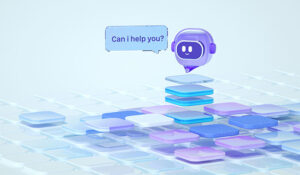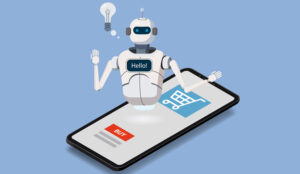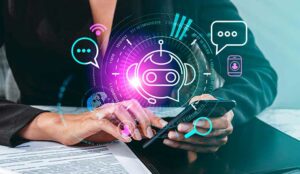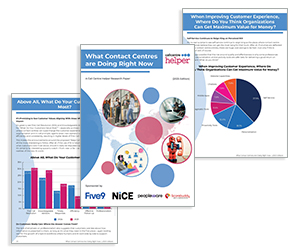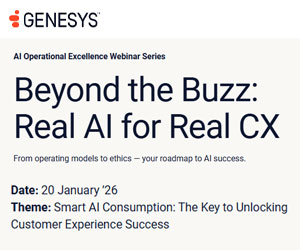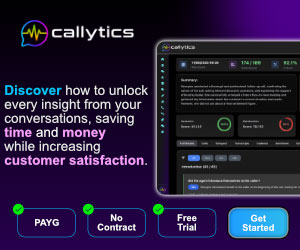Automation is everywhere, helping businesses and individuals complete tasks more efficiently.
But what exactly is the difference between a bot and a chatbot?
While both are designed to automate tasks, the key distinction lies in their purpose and how they interact with users.
To find out more, we asked Angela Lepelley, Sales Director – AI & Automation EMEA at Five9, and Stuart Dorman, Chief Innovation Officer at Sabio to explain the difference between a bot and a chatbot.
Video: What Is the Difference Between a Bot and a ChatBot?
Watch the video below to hear Angela and Stuart explain the difference between a bot and a chatbot:
With thanks to the following people for contributing to this video:
- Angela Lepelley, Sales Director – AI & Automation EMEA at Five9
- Stuart Dorman, Chief Innovation Officer at Sabio
What Is a Bot?
A bot is any technology that replaces a task once carried out by a human, as Angela explains:
“When I think of a bot, I think of a robot. Which is essentially any technology that’s replacing something that a human used to do.
So going back a decade or two, it’s physical machinery taking over manual labour. Today we use the term to cover software, and anything that can replicate and automate what would have been a manual human task.”
Today, the term covers software that automates repetitive tasks, such as processing orders or retrieving data.
Bots follow instructions and perform actions on behalf of users, but they do not engage in conversation.
“All of these words originated from the word robot. And if you actually look at where that word came from, it came from Czechoslovakia and it actually means forced labour. And I think that’s quite a good way of describing what a bot does.
Essentially what it does is carry out repetitive tasks on behalf of the user. So you give a program some agency, it can carry out a function, maybe booking tickets online, anything repetitive that a human could do, the bot can replicate.” – Stuart
What Is a Chatbot?
A chatbot is a specific type of bot designed for conversation, and it interacts with users through text or voice, aiming to replicate human dialogue.
“The chat part, as the name implies, means it’s conversational, whether that’s through text or voice.
This is the key distinction to me, as bots are inherently not human, but by adding the chat bit, what we’re doing is trying to mimic human interaction with technology.
We all know that’s complex and our brains have context, meaning, and we use long sentences, and detect emotion. I think this is where we’re going with kind of the humanizing of chatbots.” – Angela
Unlike standard bots, chatbots interpret language, respond to questions, and guide users through processes, as Stuart explains:
“Chatbots add the ability to interpret language to that conversation. So you can actually create a structure around a conversation or you can ask your questions and then you can get responses back.
But you’re still taking the customer on a predefined task to allow them to achieve an outcome through language. So that’s the difference between a bot and a chatbot.”
While basic chatbots follow set scripts, more advanced versions use AI to recognise intent and context, making interactions feel more natural.
Why Does the Difference Matter?
Bots handle repetitive tasks efficiently, while chatbots add a human-like element to digital interactions.
Understanding this difference helps businesses choose the right solution – whether for automating processes or enhancing customer communication.
If you are looking for more great insights from the experts, check out these next:
- What Are Watermelon Metrics?
- A Great Way to Do a Coaching Session
- A Quick Guide to Chatbots
- 10 Expert Tips for Call Centre Coaching
Author: Robyn Coppell
Reviewed by: Hannah Swankie
Published On: 2nd May 2022 - Last modified: 25th Sep 2025
Read more about - Video, Angela Lepelley, Chatbots, Editor's Picks, Five9, Sabio, Stuart Dorman, Videos









